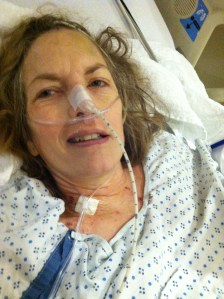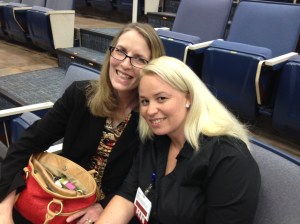OKLAHOMA CITY — One in fifty people are living with a brain aneurysm, about six million people nationwide.
If a brain aneurysm ruptures, many are killed immediately; most have permanent neurological deficits.
Women are more often affected than men.
“It took me down.” said Norma Cates. “I remember my head bouncing off the floor in the bathroom.”
Cates was at work October 11, 2013 when the seizures started. She’s the CEO at a credit union in Tulsa.
Cates went to St. John Hospital in Tulsa first, and then her doctors made a critical decision to put her on a medical chopper and send her to OU Medical Center in Oklahoma City.
“At first I didn’t want to go.” said Cates’ daughter, Melissa Brown. “I was like why? I didn’t want to leave Tulsa. It’s not like we live in a small town. We have other hospitals and other doctors. I didn’t understand.”

Doctors at OU Medical Center’s neuroscience ICU specialize in life-saving treatment for stroke and aneurysm patients just like Norma Cates.
They diagnosed Cates’ aneurysm as severe. It was a massive bleed, deadly in half of patients.
“In the beginning we didn’t think her prognosis was good at all.” said ICU manager Margie McGuire.
The medical staff wasn’t sure Cates would make it through the night.
“We were standing outside of her room in ICU, and the doctor told us statistically, with what she has, nationwide the survival rate was 50/50.” said Brown.
But, McGuire and neurologist Dr. Ryan Hakimi saw early on Cates was a fighter.
“I’ve learned not to give up on anybody.” said Dr. Hakimi. “We don’t draw conclusions early on. Everyone does poorly if you don’t provide medical care. We have a team approach to patient care, and we’ve had really excellent results.”
Doctors sealed off the aneurysm with a series of tiny platinum coils placed in the brain using a micro catheter.
Norma Cates gives praise to God and credit to her doctors.
“I just felt covered up by love, like a comforter. The love of Christ, my family, my friends because they were praying for me. It just felt very comforting.” Cates remembers.
At the neuroscience center the survival rate for aneurysms is close to 90 percent.
“If you try and give everybody a chance there are going to be patients who end up being completely normal thereafter.” said Dr. Hakimi.

Norma Cates has made a full recovery.
It’s been one year and she has a clean bill of health.
She is back to work at the credit union in Tulsa, and she is thankful for her survival and a lasting friendship with Margie McGuire, the nurse who cared for her in ICU.



